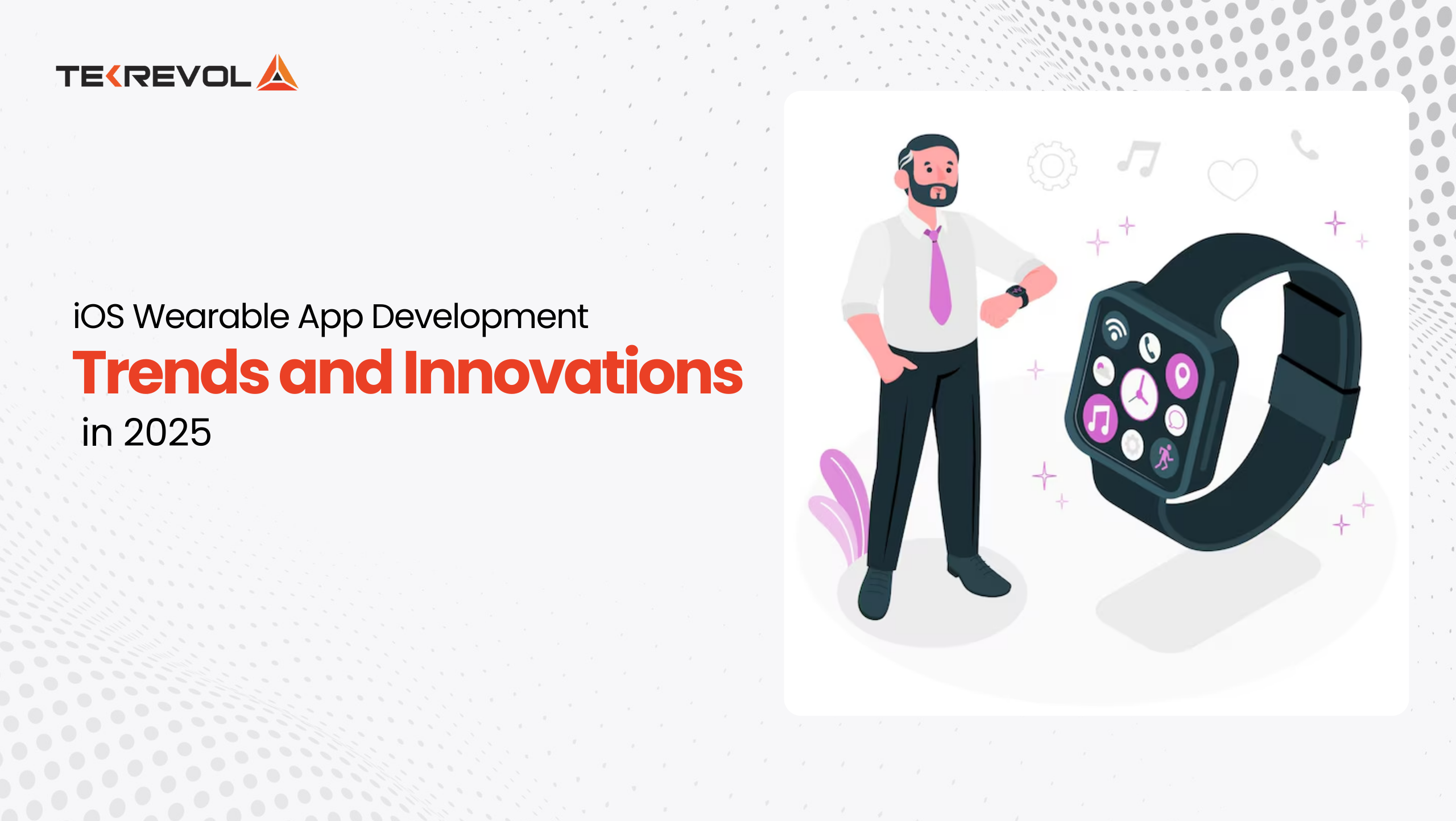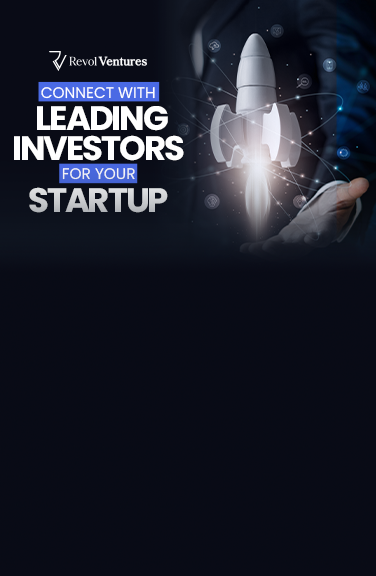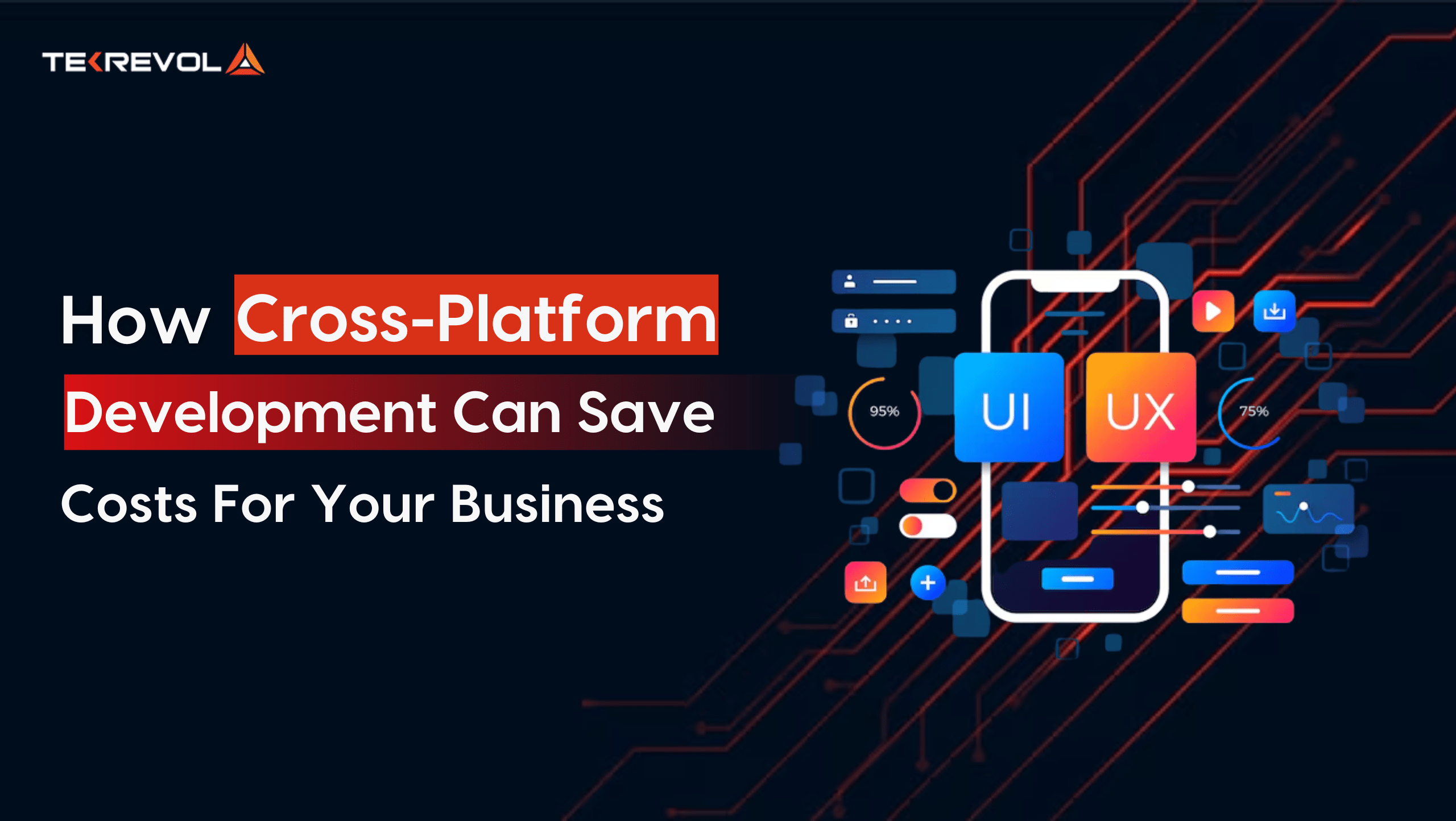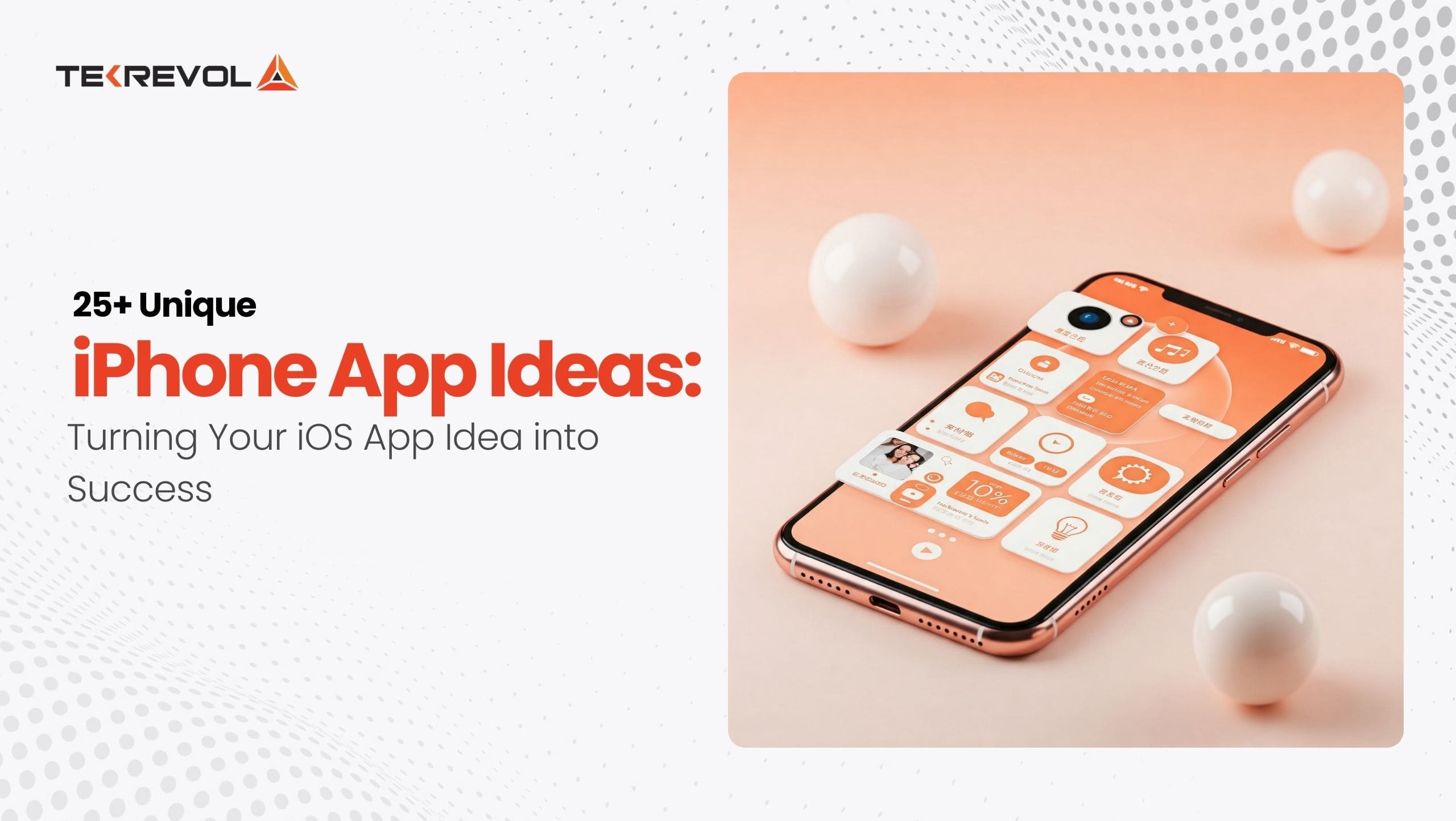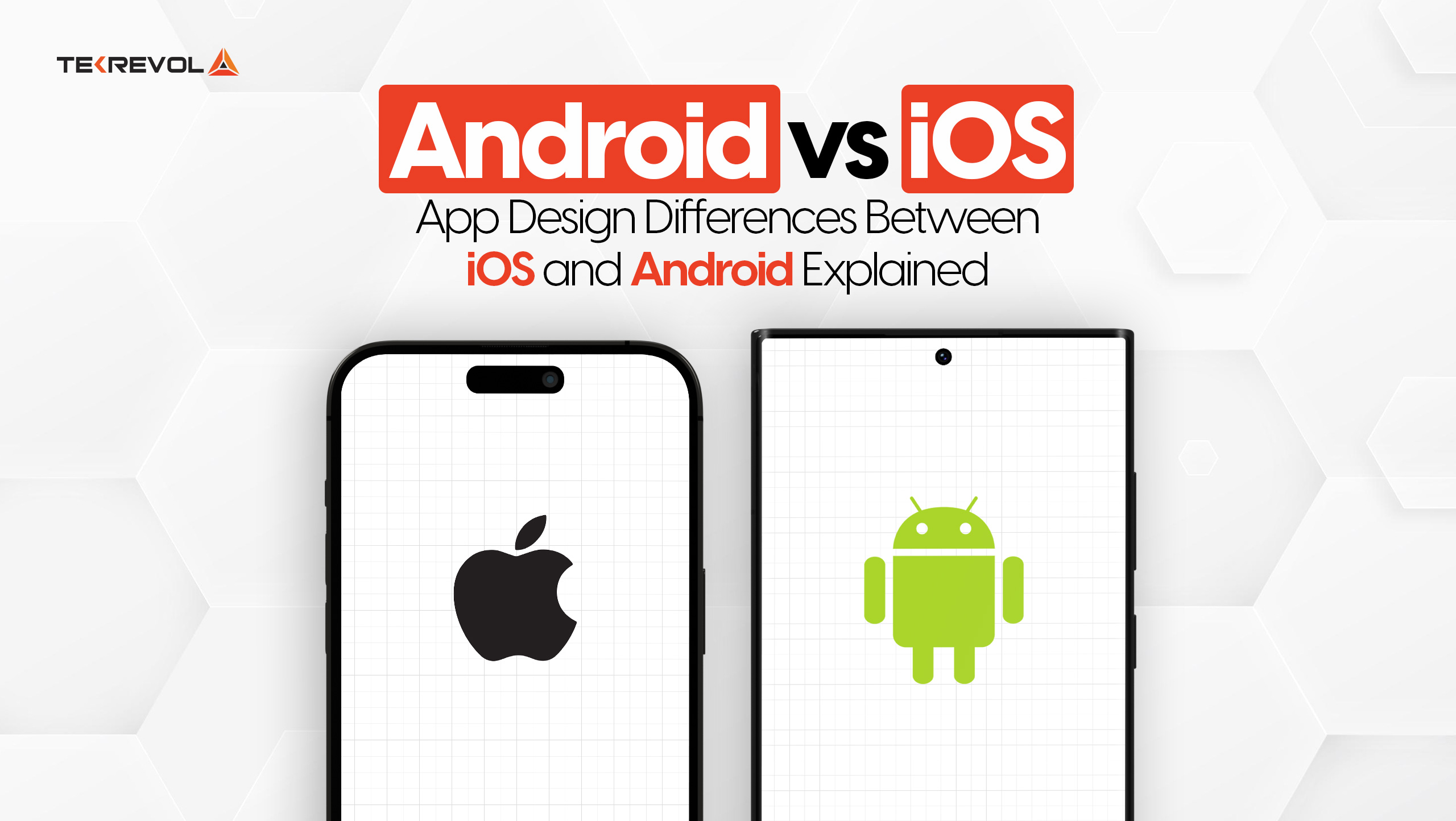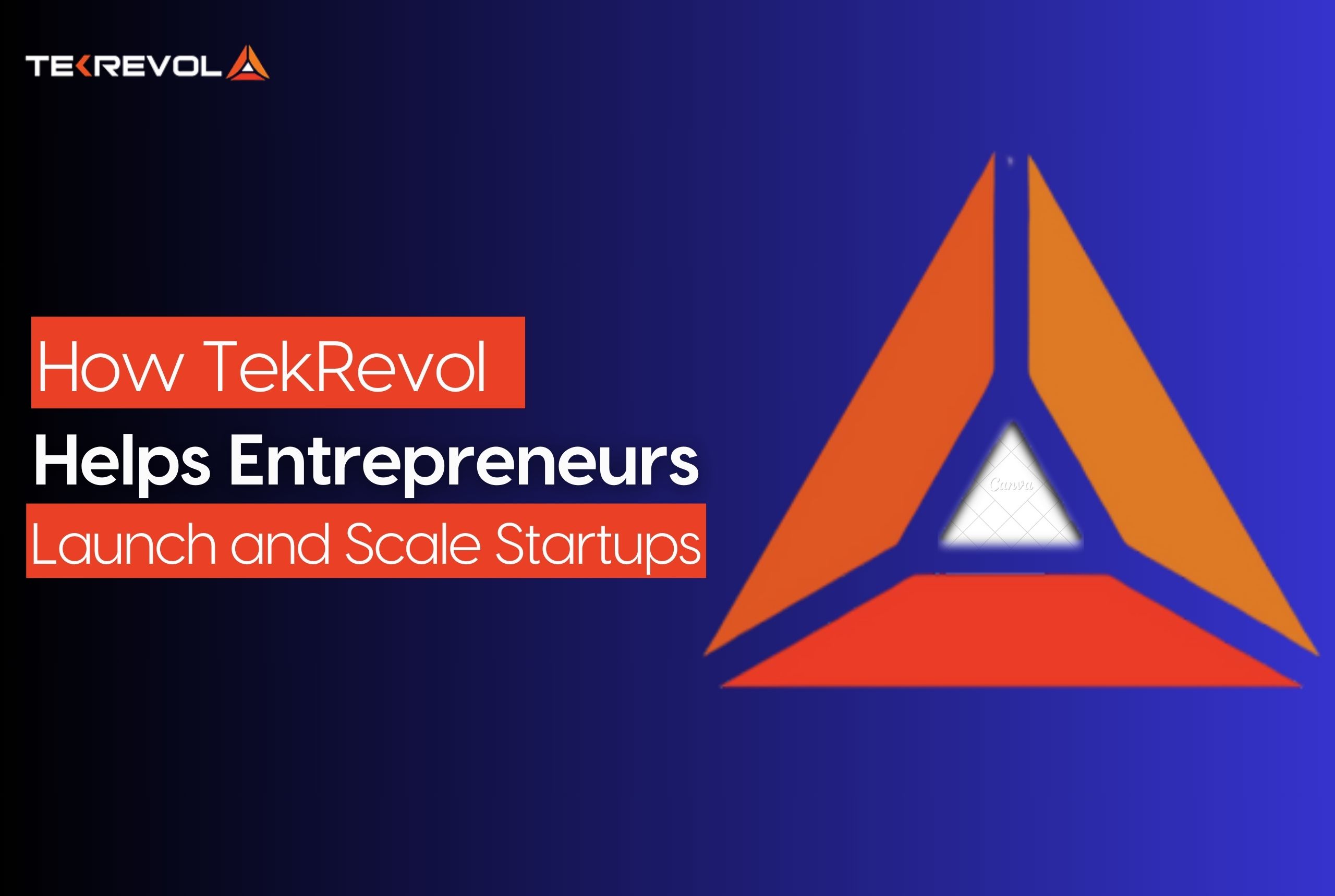Wearable gadgets are one of the fastest-growing trends in the modern world. Such iOS wearable app development like health tracking, messaging, and smartwatch gadgets are the top priority for customers.
From developing smarter applications through AI and ML to exploring the possibilities for augmented reality in wearables, developers and business owners find themselves in a unique space to stay ahead of the game.
This dynamic landscape challenges developers to push boundaries, but it also empowers businesses to embrace a future where wearable technology will transform how they operate and connect with their audiences.
I have found that the trends and innovations of iOS wearables in the app development landscape in 2025 are full of possibilities and opportunities for developers and business owners to embrace this increasingly dynamic field.
Let’s get started.
What Are IOS Wearable Apps?
Wearable apps are computer applications developed to work on wearable devices like smartwatches, fitness bands, and other portable body-worn gadgets.
They rely on the hardware capability of wearables, for instance, sensors, GPS, heart rate monitors, and gyroscopes, to provide personalized and real-time functionality to their users.
Unlike mobile applications, wearable application development is focused on access, simplicity, and ease of integration to engage the user with minimalistic small screens, voice commands, and gesture control.
iOS applications are part of this world. This world has great robustness, offered by the Apple Watch and many more. It provides wide applicability in the usage areas like health monitoring, fitness tracking, navigation, entertainment, and work.
In addition, wearable apps are designed for specific industries, for instance, healthcare, allowing the monitoring of patients in real-time and advanced diagnostic tools.
- Intensify iOS Wearable Trends
- Enhance your visibility with iOS Wearable App Development Innovations
Advantages of Wearable App Development

iOS wearable app development offers a variety of advantages that can easily enhance user experience and boost innovation in wide sectors.
- Real-Time Data Monitoring: Smartwatch app development innovations allow you to analyze and monitor the stats including walking, sleeping, and hand heart rates all in real time.
- Enhanced Customer Interaction: Companies are using iOS wearable apps to ensure all the services are personalized to boost the user experience of the customers.
- Personalized User Experience: These wearable applications enable sensors using AI to provide more user-preferred recommendations such as optimizations or workout plans for scheduled preference.
- High Productivity and Safety: Wearable applications are very helpful in industries since they help track employees’ health conditions and detect fatigue, which in the long run prevent accidents, especially during logistics and construction.
- Easy Transfer of Data: Wearable applications, through IoT and cloud integration, allow easy transfer of data between devices that can then be used to get more accurate insights and to streamline business processes.
- Support Health and Wellness Goals: Wearable fitness and wellness apps help users set goals and track their progress toward achieving long-term engagement and encouraging a healthier lifestyle.
- Industry-Specific Applications: Telemedicine in healthcare, real-time tracking in logistics, and many other use cases are increasingly tailored for niche applications to wearable apps, enhancing their practical value.
These benefits form the basis of the growing importance of wearable apps as tools that can improve both personal convenience and enterprise efficiency.
What Makes iOS Wearable App Development Unique?
iOS wearable app development has seen something special in the tech world because it can easily be integrated with the robust ecosystem of Apple, offering unmatched functionality and user experience.
Other platforms cannot compare to iOS wearables because they leverage the cohesive interaction between devices like the Apple Watch, iPhone, and iPad to create a unified digital environment.
This enhances usability, making sure that apps run smoothly across devices and deliver a consistent user experience.
Such capabilities enhance building applications that can generate actual insights in real-time and are capable of, at the same time, supporting health monitoring, tracking for fitness, or office productivity.
Innovative Applications Propelling iOS Wearable Apps
Fitness Monitoring
iOS wearables like the Apple Watch have become a standard for fitness tracking. From ECG monitoring and blood oxygen level measurement to workout tracking, the technology is improving with more accurate measures and tailored suggestions.
Tapless Payments
The use of Apple Pay in wearables offers secure payments on the go and points to the future potential of wearable commerce applications.
IoT Integration
Playing important roles in smart home management, iOS wearable apps come in handy in controlling all lights, adjusting thermostats, and much more in home automation.
Customized Notices
Highly advanced personal notification systems, which evolve the behavior of the user itself, provide a more stimulating and less annoying experience than others.
- Boost Your Digital Experience
- Choose the iOS Wearable App Development to be alive in the wearable technology landscape.
Revolutionary Trends in Smart Watch App Development for 2025
The smartwatch app development trends for 2025 reflect a focus on innovation, user experience, and cross-platform functionality.
1. AI-Driven Personalization
Wearable apps are increasingly incorporating artificial intelligence to deliver hyper-personalized experiences. For instance, fitness apps can create customized workout plans based on the user’s past performance, whereas productivity apps can adjust dynamically to the user’s schedule.
2. Gesture-Based Controls
Smartwatch app development innovations have been exploring gesture recognition, in which the user can command the action by hand movements rather than touch or voice commands. This is an especially valuable trend for accessibility and hands-free operations.
3. Optimization of Battery Life
iOS wearable apps focus on energy efficiency. The developers use lightweight code and innovative design patterns to increase the battery life of the device without losing any functionality.
4. Integration of Mixed Reality
AR and VR are making their way into wearable applications. For instance, AR overlays on a smartwatch can enhance navigation or provide contextual information during workouts.
Friendly Wearable App Development Process
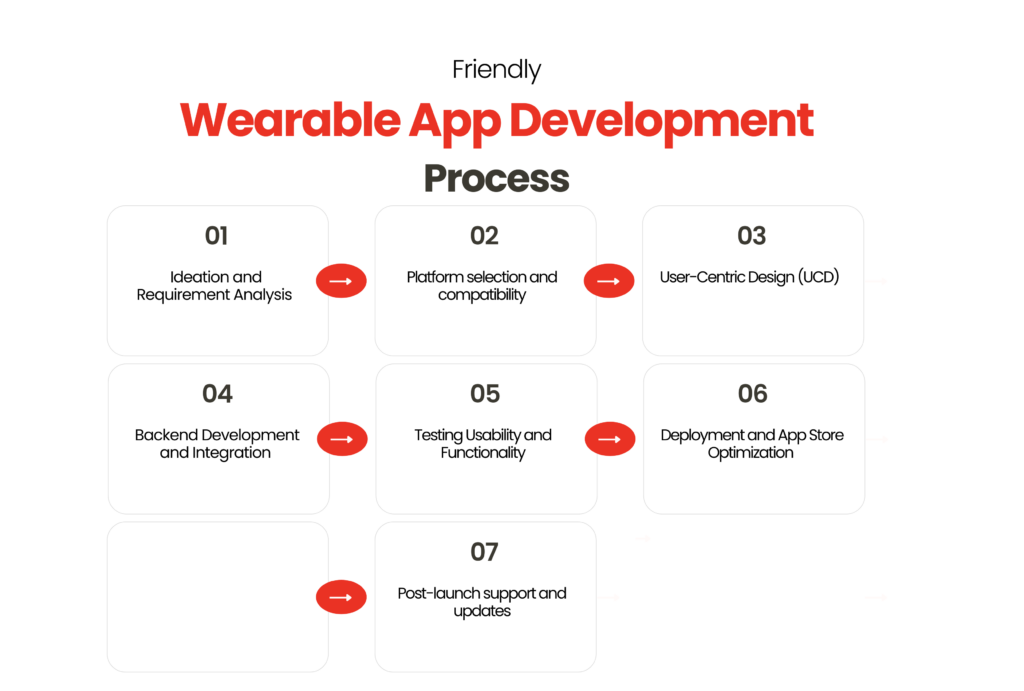
A friendly wearable app is a strategic approach that combines innovative features with smooth usability. There are some key steps in the development process to ensure the app is capable of meeting the unique needs of wearable devices and their users:
1. Ideation and Requirement Analysis
Identify the core purpose of the app and the target audience.
Identify the core features basis the hardware strengths of the device, be it sensors, GPS, or biometric scanners.
Study the market and competitor apps to figure out the gaps and scopes for innovation.
2. Platform selection and compatibility
Decide whether the app will native to a particular platform like iOS for Apple Watch or cross-platform in which it supports multiple wearable ecosystems.
Ensure the application is compatible with the most recent operating systems and gadgets for better performance.
3. User-Centric Design (UCD)
Create a minimalist and intuitive user interface as the constraint in the size of wearable screen devices
Tactically utilize touch gestures, voice commands, and haptic feedback to emulate natural interaction
Prototype to usability testing, gather early-cycle feedback
4. Backend Development and Integration IOS
Provide a solid backend architecture supporting real-time data collection processing, and syncing
Develop applications using cloud platforms with APIs, making data transfer between heterogeneous devices or systems straightforward.
5. Testing Usability and Functionality
Test on numerous scenarios to be assured that the app would be working fantastically in diverse scenarios.
Test the battery efficiency, responsiveness, and sensor and features of wearables’ compatibility.
Beta testing on real users to gain an even better feel and to further fine-tune the app.
6. Deployment and App Store Optimization
Prepare the app for submission by going through each platform’s guidelines; for instance, the Apple App Store.
App store optimization by using a catchy description, keywords, and screenshots to improve discoverability
7. Post-launch support and updates
Follow the performance of the application and the user’s feedback so that bugs can be fixed, and functionality enhanced
The release of updates is based upon advancements in wearable technology as well as user expectations.
All this will bring functional, engaging, intuitive, and exactly wearable applications to the developers’ minds. All of these applications deserve the ever-changing demands technologies in wearable technology demand.
Challenges and Solutions in iOS Wearable App Development
Although the potential is vast, so is the complexity of this domain: wearable application development has its own set of challenges.
Limited Screen Real Estate
Solution: Developers are opting for clean and simple designs to highlight the most crucial information to enhance the usability of the product.
Battery Constraints
Solution: Research into algorithms and the organization of background tasks are currently reducing battery usage.
Data Security and Privacy
Solution: The Appuzz team can rely on stringent security protocols such as end-to-end encryption plus advanced APIs so as to build applications designed to safeguard user’s data.
Cross-Platform Adaptation: An In-Exaggerated Virginia Herrera-Watrous
Despite heavy collaboration on iOS wearables dominance, the market still has cross-platform competencies. Possessing the capacity to create apps for Wear OS tablets and simultaneously for WatchOS enables a developer to market the gadgets efficiently. Increasingly, developers are using Flutter or Kotlin Multiplatform to facilitate the cross-platform expansion of borders.
Considerations in the Creation of Wearable Devices
1. Adopt the ‘Less is More’ philosophy
In a scenario where the display area is small screen design, understanding, and ease of use is crucial. Developers are using simple design concepts that require very little effort in detour directions.
2. Make it user-centered
Wearable computing and mobile applications must accommodate all intended users and their ranges of … Consider the use of different languages, scaling up letters, or haptic responses touch options.
3. Connectivity in all situations
There must always be interactivity and timely responses to users wearing the wearable device, particularly during health tracking or directional finding. Allowing for the utilization of Apple’s APIs in sped-up updates must be a priority.
How Is Machine Learning Technology Affecting the Development of iOS Wearable Applications?
Machine learning models open new frontiers in designing wearable applications.
Thanks to machine learning, subjects such as predictive analytics and recommendation systems are being taken to new levels:
- Health and Fitness: Loyalty programs can provide these applications with historical health records and use them to outline trends over time or present users with ways to avoid them.
- User Behavior patterns: Certain patterns including usage patterns can be learned and automated using Machine learning strategies and advanced algorithms.
Role of Hardware in Advancing Wearable Application Development
The wearable hardware is the key to the development of apps by Apple. The faster processors, better sensors, and longer-life batteries ensure that developers build on a robust foundation.
- New sensors: It can sense blood-glucose levels, or continuously monitor water hydrations.
- Strong connectivity: The implementation of 5G ensures faster and more reliable data transfer. This is an application that requires real-time processing.
Smartwatch App Innovations Redefine Consumer Experience End
The developments in smartwatch app development are not only enhancing user satisfaction but also widening the limits of what can be achieved with these gadgets.
- Voice-First Interfaces: Improvements in Siri have made voice commands the primary interface for most users to use the system.
- Modular Complications: Now complications on the Apple Watch enable users to add actionable data points to their watch faces.
Leverage the Apple Ecosystem for Success
Indeed, the seamless integration of iOS wearable apps in the Apple ecosystem is a game-changer since it enables developers to
- Data Synchronization: Users can share information with iPhone, iPad, and Apple Watch, making the experience a lot similar.
- Use Apple HealthKit: Health-related applications may access a rich user data reserve for deeper understanding.
Development Strategy for Wear OS App and iOS Wearable Apps
Most developers target a larger market and develop apps on Wear OS alongside WatchOS apps.
The strategies involved include:
- Use Flexible Frameworks: Use cross-platform frameworks such as React Native or Flutter.
- Universally Designed: The application supports a wide range of operating systems without losing functionality or aesthetics.
Monetization models in iOS wearable app development
Wearable technology offers a new avenue for generating revenue by applications. Some of the leading models are:
- Freemium models: Provide free basic features but premium upgrades for high functionalities.
- Subscription Services: Health and fitness apps will charge a monthly or annual fee for continuous insights and recommendations.
In-app purchases, such as achievement badges or custom watch faces, can generate more revenue with gamification features.
Wearable App Development Benefits in Other Industries:
Harnessing Biometrics for Advanced Security
Wearable apps are implementing heart rate patterns and wrist-based ECG signatures as another means of biometric authentication.
It provides higher user trust and data security applications such as mobile payment applications and health monitoring applications.
Wearable applications with gamification: An upcoming trend.
Two such sectors where gamification is adopted by wearable apps include the sectors of fitness and productivity.
Applications in which challenges, rewards, and social competition become ways to move users toward reaching their destinations.
Cloud Integration: Enable Real-time Data Synchronization
Cloud technology is an integral part of wearable apps as it allows data integration into various devices.
Based on this, wearable apps integrate their user data into cloud services and analyze trends to share actionable insights that ensure cohesion within the Apple ecosystem.
Innovations in energy harvesting are revolutionizing the wearable technology.
From a solar-powered smartwatch to kinetic energy solutions, developments pave a path for increased battery life in wearables and less dependence on traditional charging methods.
Joint Collaboration with Hardware Manufacturers Therefore, it is in this view that partnerships between app makers and hardware producers are promoting inventions.
For instance, some APIs co-developed by hardware makers enable the precision use of sensor data toward resultant new application possibilities such as medic-grade health monitoring and very advanced fitness tracking.
- Embrace the Future of Wearable Tech!
- Unlock the potential of smart solutions with innovative iOS Wearable App Development.
Conclusion
iOS app development for wearables will continue to rise on the back of technological innovations and evolving user needs as 2025 unfolds. A prime focus on personalization, AI, and cross-platform adaptability by developers will deliver value-added apps for improved user engagement, unlocking new revenue streams.
The time has come for businesses and developers to embrace wearable application development. Whether it is with innovation-based health trackers, IoT integrations, or rich experiences that users will love, the possibilities are endless.

 408 Views
408 Views February 14, 2025
February 14, 2025